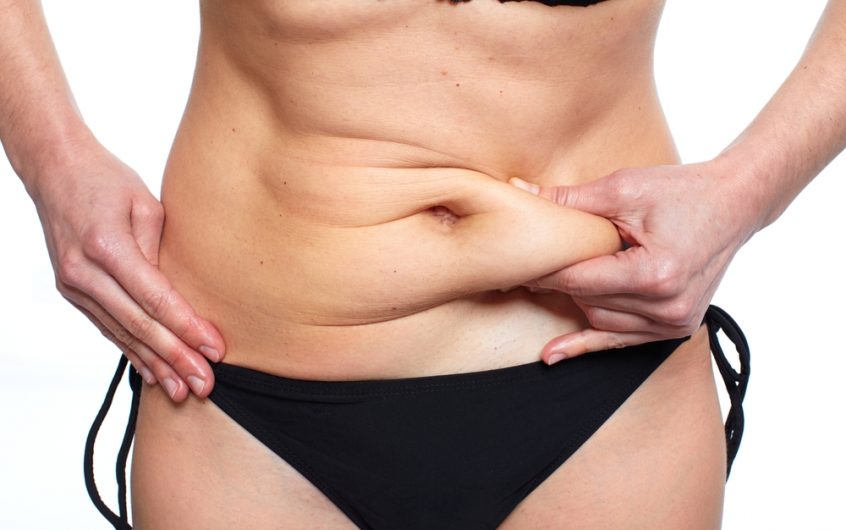Also known as abdominoplasty, tummy tuck surgery is a procedure that will flatten and reshape your midsection by removing loose skin, excess fat, as well as tightening the muscles in the abdominal wall. As an additional benefit of the procedure it can also remove some, if not all, of the stretch marks in your lower abdomen. This procedure is popular with women following childbirth, in individuals who have lost a significant amount of weight, and people who suffer from separated or weakened abdominal muscles leaving them with a poor body contour around their midsection.
- If you suffer from one or more of the following issues you may be a good candidate for tummy tuck surgery:
- If you have loose, hanging or stretched skin around your midsection
- If you have excess fat around your midsection that does not improve with diet or exercise.
- If the body contour of your midsection has been affected by pregnancy or significant weight loss.
- If you suffer from separated or weakened abdominal muscles (as a result of pregnancy and/or rapid weight gain)
- If you feel that your protruding stomach is unattractive.
- If you are self-conscious about the contour of your stomach.
Additionally, and depending on your desired body contour following tummy tuck surgery, you may wish to consider combining it together with liposuction in order to achieve your desired look. Be sure to speak with your qualified cosmetic or plastic surgeon to ensure that your surgery plan includes all procedures necessary to ensure the best possible transformation for you.

Tummy Tuck Methods
As a popular cosmetic procedure, the industry has developed a number of different types of tummy tuck procedures, each designed to address specific issues common to a number of people looking to sculpt and improve their abdominal contour. There are three different types of tummy tucks; full, mini and floating. The selection of which method is appropriate for you will be dependent on the specifics of your case and your individual goals and expectations. Your cosmetic or plastic surgeon will recommend the method of tummy tuck surgery that will best achieve the results you are looking for, with the least amount of scarring possible.
Full Tummy Tuck
Also referred to as a Traditional or Complete Tummy Tuck, this procedure is ideal for individuals who have lost a significant amount of weight and/or are looking to correct more significant issues with sagging skin, excess fat, and stretch marks, located both above and below the belly button.
In a full tummy tuck there are generally two incisions, the first is generally made from hipbone to hipbone, just above the public area, along the bikini line. The second incision will be made around the belly button. Your cosmetic or plastic surgeon will then suture together any weakened or separated abdominal muscles. Liposuction will be performed on the abdomen, hips and any other area to be included as part of the surgical plan. Excess skin and stretch marks that hang below the incision line are excised and the two horizontal incision lines are sutured together. Next, the belly button is relocated to a raised, natural position, and sutured in place.
Mini Tummy Tuck
While a mini tummy tuck may provide a less dramatic transformation than a full tummy tuck, the procedure is ideal for individuals who are looking to correct a small “pouch” of excess fat, skin and stretch marks, located primarily below the navel.
In a mini tummy tuck, there is only one incision located horizontally above the pubic area along the bikini line. The incision is generally smaller than that of a full tummy tuck, reducing the issue of post-surgical scarring. As the area being addressed is located below the navel, the bellybutton does not need to be relocated.
Liposuction can still be performed on the abdomen and any other area to be included as part of the surgical plan agreed to with your cosmetic or plastic surgeon.
Extended Tummy Tuck
Also referred to as a High-Lateral Tummy Tuck, an extended tummy provides the greatest opportunity for a complete transformation of an individual’s midsection. Much as with a full tummy tuck, an extended tummy tuck will address significant issues with sagging skin, excess fat, and stretch marks located both above and below the belly button. In addition, it will also correct issues with stubborn love handles by extending the tuck over the hipbone in order to specifically address any issues with excess fat and skin there or in the upper thigh.
Again, as with a full tummy tuck there are generally two incisions, the first is made from hipbone to hipbone, just above the public area, and extending over the hips. The second incision will be made around the belly button. Your cosmetic or plastic surgeon will then suture together any weakened or separated abdominal muscles. Liposuction will be performed on the abdomen, hips and any other area to be included as part of the surgical plan. Excess skin and stretch marks that hang below the incision line are excised and the two horizontal incision lines are sutured together. Next, the belly button is relocated to a raised, natural position, and sutured in place.
Although an extended tummy tuck involves more extensive scarring than a full tummy tuck, it also removes excess fat and skin from the front (both above and below the belly button) and hips (love handles), while also addressing issues with weakened abdominal muscles.
Tummy Tuck Surgery
Tummy tuck surgery is generally performed as an outpatient procedure while the patient is under general anesthesia. There are variations to the number and placement of the incisions used for tummy tuck surgery. Given the particulars of your specific case and desired outcome for the shape and appearance of your midsection; your cosmetic or plastic surgeon will employ one of the three methods of conducting tummy tuck surgery (described above) after having discussed it with you during your consultation.
Depending on the procedure, there may be up to two incisions. The first is generally made just above the public area along the bikini line, possibly extending to the hipbone and/or over the hipbone in the event of an extended tummy tuck. The second incision (if necessary) will be made around the belly button.
Your cosmetic or plastic surgeon will then suture together any weakened or separated abdominal muscles. Liposuction will be performed on the abdomen, hips and any other area to be included as part of the surgical plan. Excess skin and stretch marks that hang below the incision line are excised and the two horizontal incision lines are sutured together. Next, if necessary, an access incision is made for the belly button and it is pulled through and sutured into place. Lastly, the surgeon will often insert one or more drains to prevent fluid buildup, and aid in healing.
While there are variations to the length and number of the incisions used for tummy tuck surgery, in all cases, with proper planning and self-care the appearance of the scars can be hidden and minimized.
Tummy Tuck Recovery
While the majority of tummy tucks are performed on an outpatient basis, your cosmetic or plastic surgeon may require an extended stay for more extensive surgeries and/or if they feel you may benefit from the additional observation. As tummy tuck surgery generally involves the tightening of the abdominal wall, as well as the excision of tissue, it tends to have a longer recovery period than that of liposuction alone.
Most patients require anywhere from 2-4 weeks off from work to rest and heal at home depending on the nature of their work. While, patients are resting and recovering at home, it is recommended that they still move about the house and participate in light activities to prevent the development of blood clots. It is very important to carefully follow your plastic or cosmetic surgeons’ directions for self-care after surgery.
You will need to wear a compression bandage or garment around the treated area to minimize swelling and aid in healing. Additionally, depending on whether your surgeon inserted drains, you may be required to care for and empty the collected fluids from time to time. It is also recommended that you refrain from heavy lifting and vigorous activities for at least 6-8 weeks.
If pain or swelling persists, contact your surgeon to find out if your pain, redness and swelling is normal or a sign of a problem requiring additional attention.
Tummy Tuck Risks and Considerations
Tummy Tuck surgery will permanently remove excess fat, skin and stretch marks from the treated areas, while also tightening the abdominal wall. The fat cells that have been removed will not grow back, and nor will the excess skin or stretchmarks, as long as you maintain a healthy lifestyle and a stable weight. Tummy tuck surgery can be a life-changing procedure, helping you to achieve and enjoy a slimmer, youthful, and more flattering body contour.
As one of the most transformational elective procedures in the world, tummy tuck surgery is both quite popular and safe. However, no surgery is completely free of risk. In general, potential risks following from tummy tuck surgery include reaction to the anesthesia, hematoma or seroma, infection, bleeding, loss of sensation, damage to local tissue and organs, irregular contours or asymmetries, and the need for revision surgery.
Be sure to speak with your cosmetic or plastic surgeon about the benefits and limitations associated with tummy tuck surgery, and ensure that you fully understand the procedures and their related complications prior to signing your consent form.




